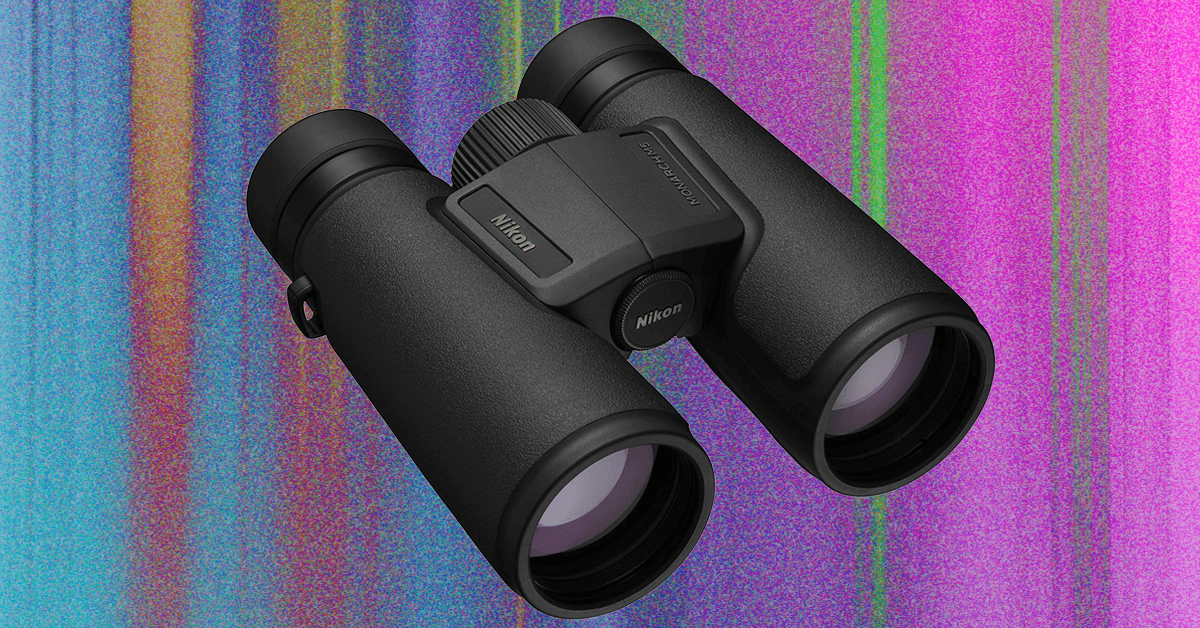Tech
Former Google CEO Will Fund Boat Drones to Explore Rough Antarctic Waters

A foundation created by Eric Schmidt, the former CEO of Google, will fund a project to send drone boats out into the rough ocean around Antarctica to collect data that could help solve a crucial climate puzzle. The project is part of a suite of funding announced today from Schmidt Sciences, which Schmidt and his wife Wendy created to focus on projects tackling research into the global carbon cycle. It will spend $45 million over the next five years to fund these projects, which includes the Antarctic research.
“The ocean provides this really critical climate regulation service to all of us, and yet we don’t understand it as well as we could,” says Galen McKinley, a professor of environmental sciences at Columbia University and the Lamont Doherty Earth Observatory and one of the lead scientists on the project. “I’m just really excited to see how much this data can really pull together the community of people who are trying to understand and quantify the ocean carbon sink.”
The world’s oceans are its largest carbon sinks, absorbing about a third of the CO2 humans put into the atmosphere each year. One of the most important carbon sinks is the Southern Ocean, the body of water surrounding Antarctica. Despite being the second smallest of the world’s five oceans, the Southern Ocean is responsible for about 40 percent of all ocean-based carbon dioxide absorption.
Scientists, however, know surprisingly little about why, exactly, the Southern Ocean is such a successful carbon sink. What’s more, climate models that successfully predict ocean carbon absorption elsewhere in the world have diverged significantly when it comes to the Southern Ocean.
One of the biggest issues with understanding more about what’s going on in the Southern Ocean is simply a lack of data. This is thanks in part to the extreme conditions in the region. The Drake Passage, which runs between South America and Argentina, is one of the toughest stretches of ocean for ships, due to incredibly strong currents around Antarctica and dangerous winds; it’s even rougher in the winter months. The ocean also has a particularly pronounced cloud cover, Crisp says, which makes satellite observations difficult.
“The Southern Ocean is really far away, so we just haven’t done a lot of science there,” says McKinley. “It is a very big ocean, and it is this dramatic and scary place to go.”
Tech
I Keep Cooking Thanksgiving! Here’s the Best Holiday Meal Delivery

Making a full Thanksgiving feast for guests can be daunting, for some perhaps even terrifying. The world, and especially Hallmark movies, is full of holiday disaster stories: burnt turkeys, failed desserts, steamed hams. But I’m not bragging when I say that the first Thanksgiving dinner I prepared for my extended family—a little early, this year—was an unmitigated success.
My aunt couldn’t stop talking about the black pepper in the biscuits and the sage on the carrots. My uncle went in for the turkey and the apple-sausage stuffing. My father didn’t speak at all, unless prompted. He just ate and ate. This was a compliment.
But of course, I had cheated. I had ordered my Thanksgiving in the mail—one of the new breed of Thanksgiving meal kits.
The meal was genuinely home-cooked, of course, prepared mostly from scratch. But the entire seven-platter feast—its ingredients and recipes—had arrived two days before, in a box large enough to house a primal cut of beef. It was Thanksgiving in a box: a $200 “Chef’s Table Thanksgiving” meal kit available from sister meal delivery plans Sunbasket and Gobble.
The spread from Sunbasket was vast and generous. The table contained a nearly 3-pound roast of turkey, mounds of mashed potato, pebbled cranberry compote, roasted carrots dressed in miso-sage butter, brussels sprouts dappled with pecorino romano and pancetta, an endless platter of fennel-apple-sausage-stuffing, Gruyère black-pepper biscuits caked more than an inch tall, a tureen of deep brown turkey gravy, a ginger apple crisp waiting in the wings.
Sunbasket is among a new bounty of meal kit companies that aim to ease the stress of the holidays by doing the planning and the shopping for you—big meal boxes tailor-made for those who still want to make a home-cooked meal but for whom the prospect of planning a vast and complicated feast is prohibitive. In fact, two weeks later I cooked another Thanksgiving meal from Blue Apron, this time for my sister’s family.
Here was my experience with Sunbasket and Blue Apron—and some of the other Thanksgiving meal delivery options to get your whole Thanksgiving meal delivered to your home.
Want meal kits for more everyday occasions? See WIRED’s guides to the best meal delivery services, and the best plant-based meal delivery kits.
The Blue Apron à la Carte Thanksgiving (and Holiday) Meal Kit
Available till December 29. Order by November 19 to ensure delivery by Thanksgiving.
Blue Apron, one of the OG meal kits in the US, has undergone a wholesale transformation this year. One of the biggest changes is that subscriptions are no longer required, and à la carte meal ordering is possible—indeed, it’s now my favorite no-subscription meal kit offering. What this means is that for this Thanksgiving, you can order individual Thanksgiving recipe kits to prep fresh at home, without ever setting foot in a crowded grocery store.
That means roasted grape and goat cheese salad ($12), a big ol’ turkey breast with gravy and cranberry sauce ($50), rosemary herb stuffing ($15), a truly excellent casserole worth of truffle-oiled Southern mac and cheese ($20), almond apple crumb pie ($15), brown butter mashed potatoes ($8), challah rolls with maple ($8) and roasted brussels sprouts with pistachios, ($10). I made all of these recipes for my sister’s family and our parents, a little early this year—and it was a surprisingly delicious feast fit for at least eight people. Probably even 10, if you add an extra order of mashed potatoes.
Tech
The Best Binoculars Will Help You Find the Ivory Billed Woodpecker

You get good magnification, with a waterproof (IPX7 rating) and fogproof design in a lightweight package (11.8 ounces). These also have two things that specifically make them great for kids: rugged construction and a nice, rubberized grip. I can’t tell you how many trees and rocks these have bashed into while around my son’s neck, and they’re still as good as new.
Stargazing Binoculars
When you think stargazing you probably think telescopes, but binoculars can work too, especially larger, higher-magnification models like these Celestron Skymasters. The first thing to know is that these are huge—most of the time you’ll want to use them with a tripod, which is not included in the price (they do include an adapter, which I used to put them on a photo tripod, which worked fine). The Porro prism design (see above), with 15x magnification and 70mm objective lenses, make these nice and bright, perfect for getting good views of the moon. They also work for larger clusters and nebulae. They do work for birding as well, but it’s more like using a spotting scope. They’re nice for digiscoping, though if you’re viewing something reasonably stationary, like water birds.
As with all Celestron binos there’s a nice big, smooth focusing knob, and they also have long eye relief which makes them easy to use with glasses. There is a fair bit of chromatic aberration, especially with bright stars or the moon, but I didn’t find it distracting. In fact, for the price, these provide surprisingly great views.
Image-Stabilizing Binoculars
Image-stabilized binoculars use electronics to smooth out your view, similar to what action cams do to get rid of jittery video. There are quite a few models out there, and we are still testing, but here are a few that have stood out from the pack so far.
Image-stabilized binoculars tend to be expensive, but Canon has quite a few budget models worth considering. They’re simple to use. You just tap the button on top for five minutes of stabilization, or tap again to turn it off sooner. The tech detects your movement and adjusts for it optically, in real-time. The Canon 8×20 IS, its smallest, is doubly pocket-friendly: They’re surprisingly affordable and fit in a large pocket. At 15-ounce plus battery, they won’t weigh you down.
The 8X magnification is good for wildlife and sports, as is the 10X magnification of the only slightly larger Canon 10×20 IS. The 6.6-degree field of view is narrow but wide enough for most situations.
Tech
Ransomware resilience may be improving in the health sector | Computer Weekly

In a possibly encouraging sign that cyber messaging is cutting through among healthcare providers, the sector appears to be becoming increasingly resilient to ransomware and cyber extortion, with fewer victims experiencing data encryption, fewer paying up and average time to recovery dropping according to a new Sophos report.
Based on global data collected by Vanson Bourne for a wider study, Sophos found that that this year, just 36% of victims in the healthcare industry paid a ransom, down from 61% in 2022, and over half of those that paid handed over less than what was demanded of them.
Demands from ransomware gangs also plummeted during the observed period, down 91% to $343,000 (£260,800) on average this year, with average payments dropping from $1.47m to just $150,000, the lowest of any sector reported in the wider dataset.
The mean cost of recovery – excluding any ransoms – was also down by 60% to $1.02m. And 58% of healthcare respondents said they recovered within a week, a strong improvement from 21% last year.
“It’s … encouraging to see signs of stronger resilience. In the study, nearly 60% of providers reported they recovered within one week, up from just 21% last year, which reflects real progress in preparedness and recovery planning. In a sector where downtime directly affects patient care, faster recovery is critical, but prevention remains the ultimate goal,” said Alexandra Rose, director at the Sophos Counter Threat Unit (CTU) – formerly a Secureworks unit.
However, improvement against some metrics should not be taken as a sign that the ransomware ecosystem is dwindling or the threat landscape becoming any less volatile; ransomware remains as pervasive a threat as ever and the healthcare sector is no more or less immune than any other.
“Healthcare continues to face steady and persistent ransomware activity. Over the past year, Sophos X-Ops identified 88 different groups targeting healthcare organisations, showing that even moderate levels of threat activity can have serious consequences,” said Rose.
In the past 12 months, the X-Ops team said that the most prominent ransomware gangs targeting the health industry were Qilin, INC Ransom and RansomHub – which it tracks as Gold Feather, Gold Ionic and Gold Hubbard respectively.
The data also reveal that although data encryption from ransomware has dropped to its lowest level since 2020, with only a third of attacks resulting in this scenario, the proportion of healthcare providers hit by extortion-only attacks, where data is not encrypted but rather stolen and a ransom demanded has tripled to 12% of attacks this year, from 4% a couple of years ago. The Cl0p/Clop gang, which last week claimed to have conducted a ransomware attack against an unspecified NHS body, is a great exponent of this tactic.
Root causes
Sophos’ data also reveal some insight into the root causes of cyber extortion and ransomware attacks in the healthcare industry, finding that for the first time since 2022, exploited vulnerabilities were the most common technical cause, seen in 33% of incidents, overtaking credential-based attacks, which topped the list in 2023 and 2024.
Respondents also described “multiple organisational factors” that contributed to their falling victim to such attacks, with 42% describing a lack of suitably qualified cyber security people or overall capacity, and 41% describing known but unaddressed security gaps.
-

 Tech1 week ago
Tech1 week agoFrom waste to asset: Turning ethanol production CO₂ into jet fuel
-

 Tech3 days ago
Tech3 days agoNew carbon capture method uses water and pressure to remove CO₂ from emissions at half current costs
-

 Politics5 days ago
Politics5 days agoBritish-Pakistani honoured for transforming UK halal meat industry
-

 Sports3 days ago
Sports3 days agoTexas A&M officer scolds South Carolina wide receiver after touchdown; department speaks out
-

 Business3 days ago
Business3 days agoThese 9 Common Money Mistakes Are Eating Your Income
-

 Tech1 week ago
Tech1 week agoSecurity flaws in portable genetic sequencers risk leaking private DNA data
-

 Business4 days ago
Business4 days agoWhat’s behind Rachel Reeves’s hokey cokey on income tax rises?
-

 Politics6 days ago
Politics6 days agoInternet freedom declines in US, Germany amid growing online restrictions
















-SOURCE-Caramel-Quin.jpg)




